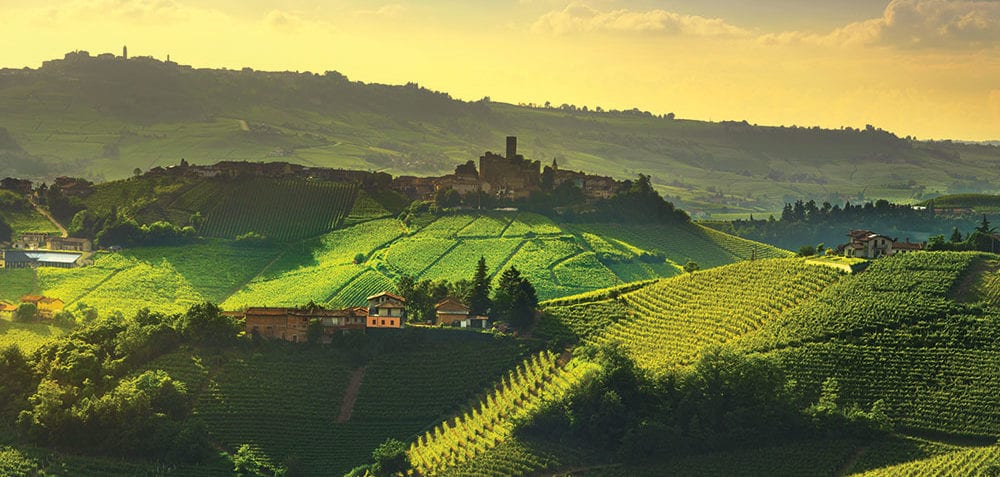Discovering the Northern Italian Vineyards through the lens of ELYSIAN’s Wine Editor
My mind drifts to the words of poet Rainer Maria Rilke as I stand perfectly still next to a wandering, 70-year-old Friulano vine in the Galea vineyard at I Clivi, a small winery in the sleepy Italian town of Corno di Rosazzo, not far from the Slovenian border in the region of Friuli Venezia-Giulia. Bud break has just begun when I arrive, and the precursor sap still glistens on the vines. I am surrounded by beauty, endless rolling hills—and forever far they stretch, Italian vineyards as well as fruit trees verging on intoxicating bloom. Here, the pace slows, and a pause slides in close and takes hold of your hand, asking you to do the same.
Late, beloved I Clivi winemaker Ferdinando Zanusso had a perpetual twinkle in his eyes, and he worked together with his son Mario, who is now at the helm, farming their land of steep slopes and harvesting low yields, which results in wines of precision and lithe concentration. Winemaking at I Clivi is thoughtful and intuitive. These Italian vineyards, which cascade like organized labyrinths around the family home and winery, are planted to white varietals Friulano, Malvasia, Verduzzo, and Ribolla Gialla, and a small amount of Merlot. The I Clivi Merlot is soft and structured, and the whites all have an unwavering backbone and a nervy acidity. The sparkling Ribolla Giala, the ‘R.B.L.’, is racy, with mineral-laced perfection, and its steady effervescence is a mirror of the memory of Ferdinando’s personality.
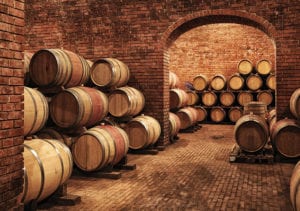
Wine Tastings
Visiting vineyards, walking with winemakers through their vineyards, meeting the families behind their wines, this is the truest, most genuine way to the heartbeat of wine. Come spring, the vineyards are just beginning their cycle, and the winemakers are full of reflection and anticipation as the growing season begins. Spending time in their presence gifts the poetry and passion of winemaking. An opportunity to attend Vinitaly, Italy’s largest and most prestigious wine expo, will be part of this adventure. Wrestling through crowds at a trade show makes clear the difference between wine as big business and winemaking holding court as a labor of love.
Trade shows, while educational and opportune, are an alternative experience to visiting winemakers at their properties. In Piedmont, we arrive with the snow-covered Alps keeping watch in the distance. We wind up and down narrow looping roads, weaving through Italian vineyards and acres of butter-yellow flowers punctuated by terra cotta rooftops. At winery Eraldo Revelli, perched high above Dogliani in southwest Piedmont, we walk among the vines with Claudia Revelli, who makes wine with her father and uncle.
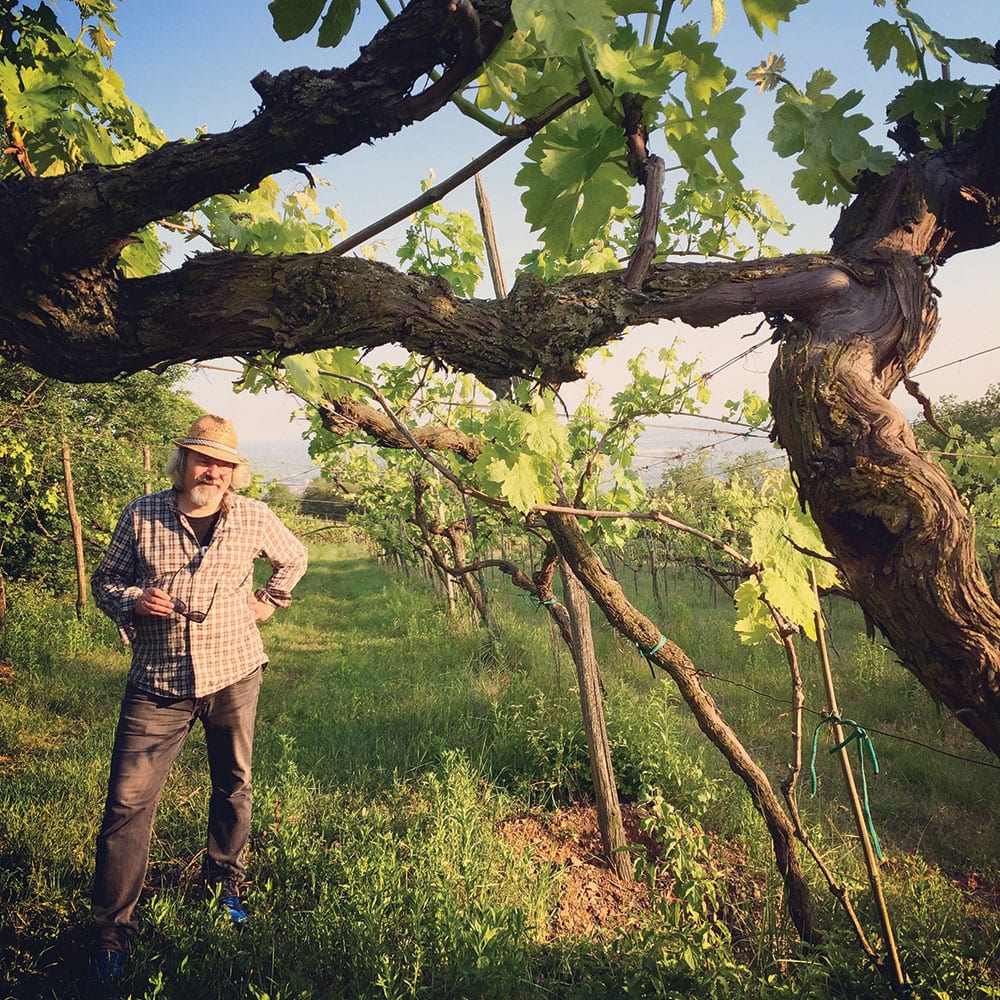
Owner and winemaker Filippo Filippi at Vigne della Brà, 60-year old vines grown in sandy, clay-caked soil, 400 meters above sea level. Image courtesy of Cantina Filippi.
Northern Italian Wine Regions
Native red varietal Dolcetto shines here, revealing polish and lush purple fruit. We wear plastic bags over our boots, a common sight in spring, to protect from the thick moist clay soil. The air is full of laughter, and little English is spoken or understood by most, which is common at these tiny wineries and delightful as we rely on pantomime, raised eyebrows and wide smiles. We are joined by her mother, who insists, in rapid-fire Italian, on taking me to the barn to polish off the lay, which has seeped through the protective bags and caked my boots. Patrizia, Claudia’s sister, arrives with the first of the next generation, baby daughter Ginevra. It’s a family affair, with everyone working some aspect of production and living together on the property.
From Piedmont we make our way to the Veneto, the night before the trade show begins. Racing the setting sun, we climb high along the steepest, most sinewy road yet, bathed in wild pink and purple light that casts gold, over the town of Soave, to winery Filippi, where wild mint has found its way into the grass, rendering the herbaceous scent after rainfall intoxicating. Here, winemaker Filippo crafts magic and mystery with his Garganega, the primary white grape of Soave.
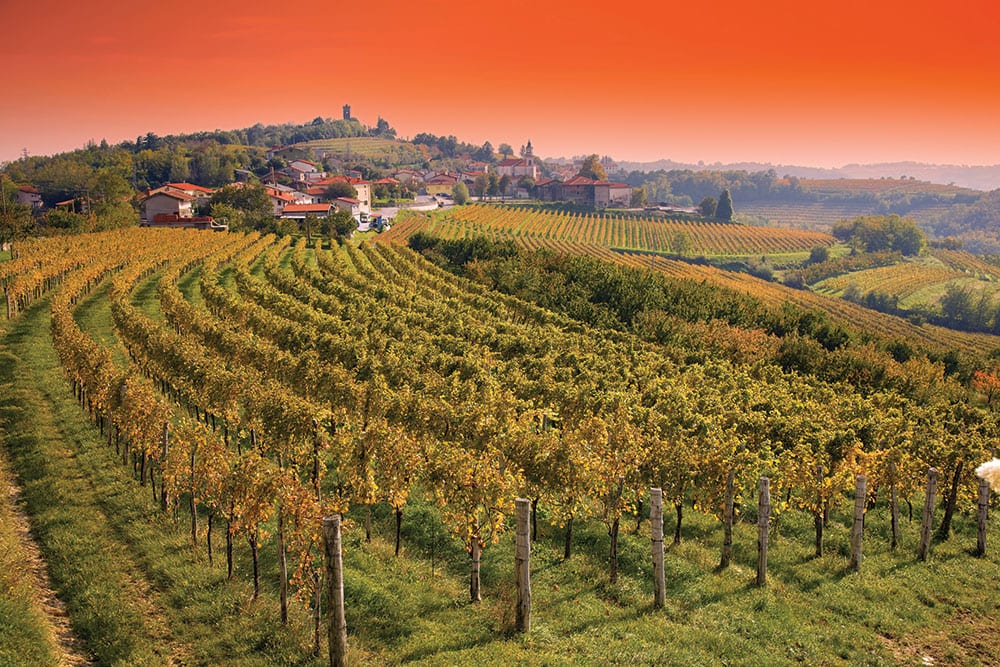
Terra cotta rooftops and the forever cascade of light, the backdrop to the vineyards of Soave in the Veneto, home to indiginous white and chameleon white varietal Garganega. Avatar_023 / Shutterstock.com.
His single-vineyard Castelcerino is an exceptional pairing wine, with a savory, apple cider-like grip. He is pure jovial rambunctiousness, and with his partner, Paola, offers a mountainous feast that lingers long into the night. The evening includes several visits to the cellar, where unlabeled magnums make their way to the table, often humorously
surprising Filippo by what’s inside.
Veneto Wine
On our last morning, we arrive in Verona for a full day at Vinitaly, where 4,000 producers and more than 150,000 wines are holding court. It’s intimidating at first until we run into winemaker Daniele Ricci of winery San Leto in eastern Piedmont and at whose kitchen table we tasted sensuous and quixotic white wines made with Timorasso. He is dressed casually, as he was in the Italian vineyard, and seated quietly at his booth. On the back of his wine bottles are the words poesia, sentimento, cura, dedizione e pazienza; il mio vino: poetry, sentiment, care, dedication, and patience; my wine. We share a collective nod. Even at the cavernous trade show, captured: soul, echoed from soil to vine to grape to the hands that harvest.
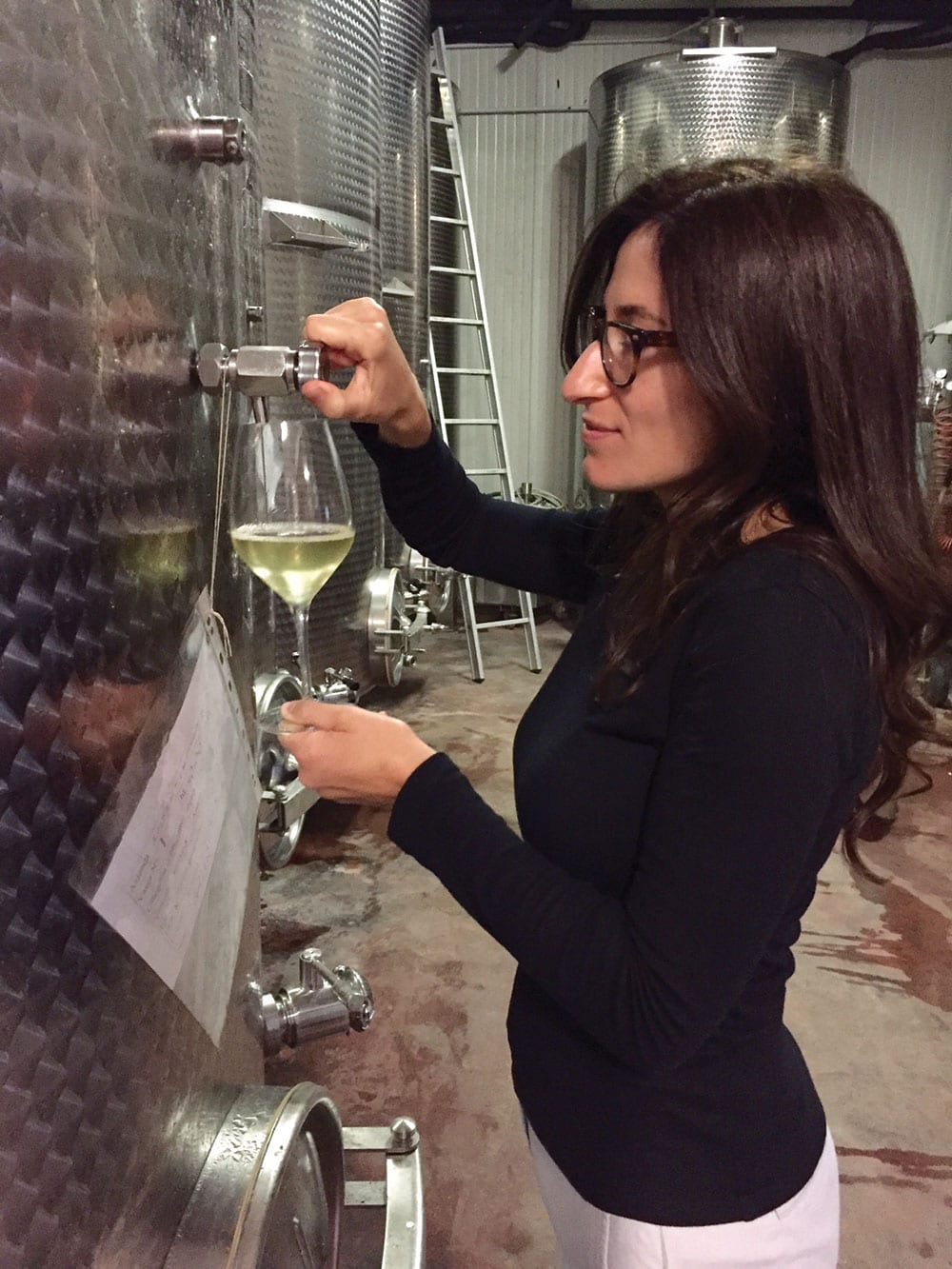
Importer and distributor Gemma Ionnani seeks out organic/biodynamic producers who authentically interpret their land through minimal intervention techniques and principled winemaking. Image courtesy of Giannoni Selections.
Armchair travel, and its dreamlike stance, can offer a portal into the understanding of a subject on an emotional level, as we allow ourselves to feel the essence of something rather than analyze it. Wine tours gift us this effortlessly, yet it is also, in its technical, a complex weave of varietals, styles, regions and countries which they call home. And let us not forget the language used to describe wine and the wine-speak of wine professionals.
There are, however, a few tricks of the trade: Old World vs. New World: The Old World refers largely to Europe—for example, Spain, France, Italy, Greece, and Hungary. The New World references the United States, Chile, New Zealand, Austria, South Africa, to name a few. Generally speaking, in terms of style, Old World wines tend to express terroir, tradition and discretion, while New World wines tend to demonstrative bold fruit, modernity, and, often, higher alcohol levels.
The Best Wineries
A big, buttery, voluptuous, “comfort food” Chardonnay, regardless of its origins, would be considered a New World style, whereas a Chardonnay from the sub-region of Chablis in the region of Burgundy in France—steely, crisp, and lithe and lean like a ballerina—would express an Old World style.
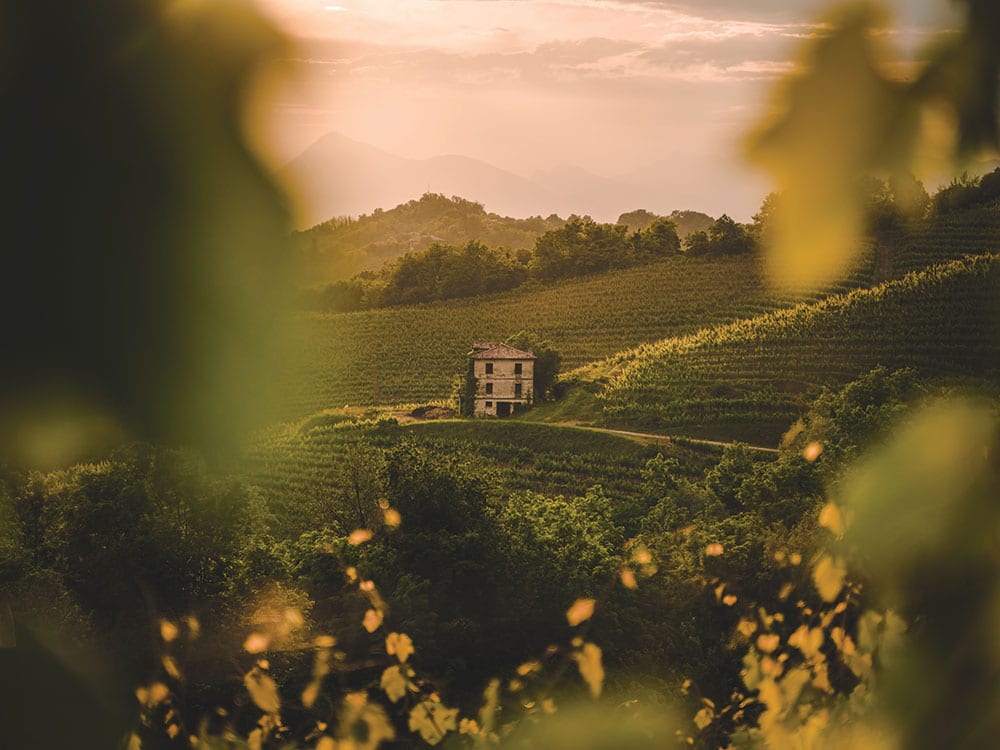
An endless sweep of vineyards planted to white varietals Friulano and Ribolla Gialla, at winery I Clivi, in Friuli-Venezia Giulia. Photography by William.Vaccaro / Shutterstock.com.
Keep in mind that wines can be made—and are—anywhere and in any style, as ultimately it comes down to the winemaker’s intention. The concept of terroir: Terroir is a French word that means a sense of place: the composition of a wine/grape/vine’s origin, the climate in which it thrives, and the soil in which it grows. When a wine speaks of its terroir, it is offering and honoring the truth of its birthplace and upbringing. How to navigate grape to place: While many grapes are grown all over the world, particular varietals traditionally tether them to certain Italian vineyards. This is most common in the Old World.
Take Italy, for example: White varietal Garganega is synonymous with the appellation of Soave in the Veneto—which is to say to ask for a white Soave, the wine will be made with Garganega, and vice versa. In the region of Piedmont, red varietal Nebbiolo is the grape permitted in the powerful, aromatic and ethereal wines from the appellations of Barolo and Barbaresco. Earthen, rustic, red varietal Sangiovese calls Tuscany home. In the appellation of Chianti Classico, 80 percent of the wine must be made with Sangiovese.
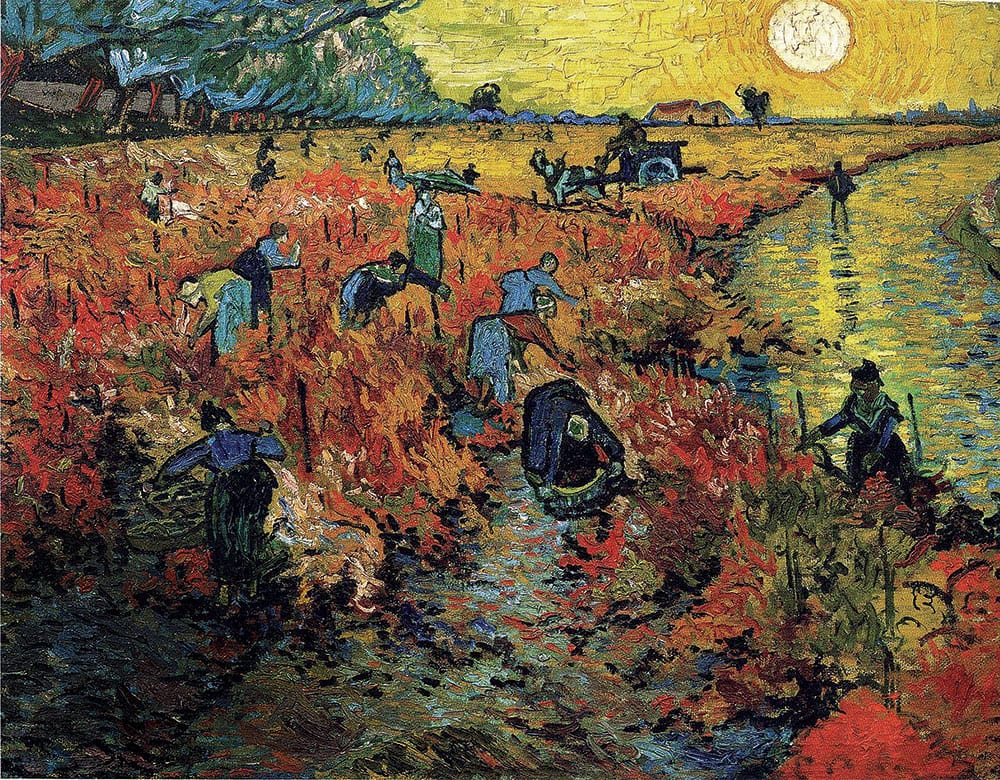
The Red Vineyards near Arles is an oil painting by Dutch painter Vincent van Gogh, completed
on a privately primed Toile de 30 piece of burlap in early November 1888. It depicts pickers in a vineyard, and is believed to be the only painting van Gogh sold during his lifetime. Like many Impressionist painters, Van Gogh’s scenics are a chronicle of the artist along the countryside of Italy, a sojourn into the heartland of wine.
Super Tuscan
A Super Tuscan, on the other hand, can be made with any number of red varietals, and Sangiovese doesn’t have to be a part of the blend. The Super Tuscan movement was Tuscany’s quite successful attempt at crafting bolder styles to appeal to a global palate in the 1970s, when Californian superstars were beginning to rival European wines, and the appetite for powerhouse wines was taking hold.
Rosé: Rosé, that pink beauty for all days, is a veritable chameleon. It can be quite dry, tremendously aromatic, fruit- forward (perceived as sweet), pensive, and just simply quaffable. Rosé can be made with any red grape and with some white or grey grapes, such as Pinot Gris. Since color comes from the grape’s skins, for rosé wine, while the grapes are crushed, the juice stays in contact with the skins, just as in the making of red wine. The color—rosé comes in many hues—depends on the length of time the skins macerate with the juice and the varietals selected.
By Paige Farrell

